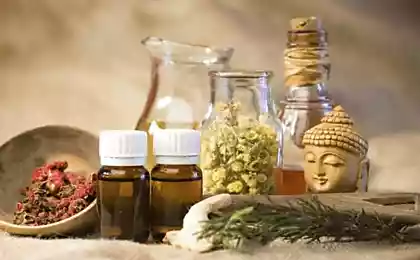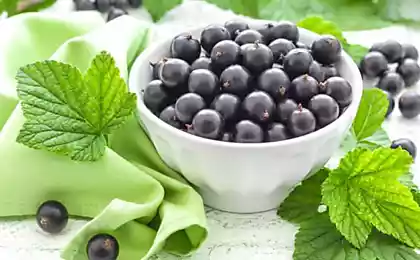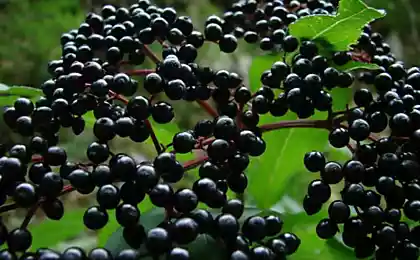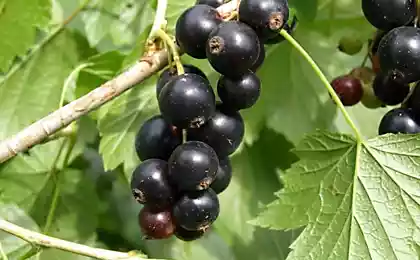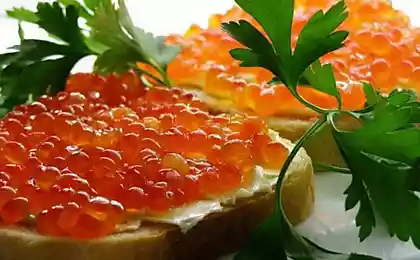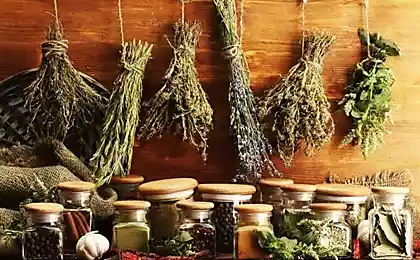1117
Black, white and red currants: disease and treatment
Why currant leaves turn yellow? Why the leaves of currant red spots? Is there effective protection of the berries from powdery mildew? If currant varieties resistant to diseases? Gardener and gardener will try to give satisfactory answers to these and other questions.
Currant: disease and treatment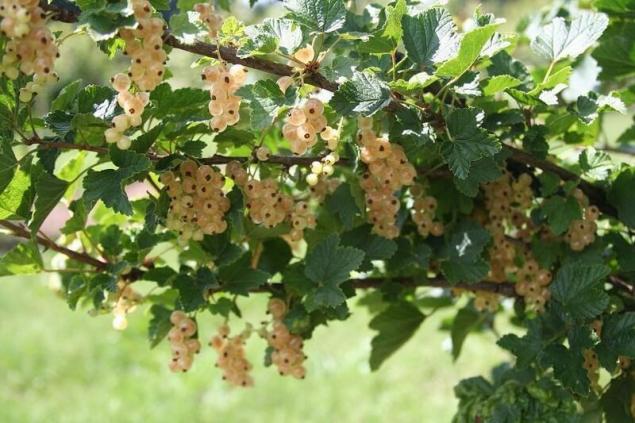
Diseases of red currant and diseases of black currant in the majority are equally manifest and equally treated. The same applies to white currants. The only thing – some diseases are more prone to one of three types that is sure to be noted in the description of the disease. Manifest disease of currants in spring and early summer and can be viral or fungal.
Viral diseases of the currant: the Doubleness of black currant
Striped mosaic currant
Fungous diseases of the currant: — Anthracnose
— Basilicata rust
Columnar rust
White spotting (Septoria blotch)
— Powdery mildew
— Gray mold
— Natrievoe drying
The doubleness of black currant Otherwise this disease that causes infertility, is called reversion. And this is the bad viral disease of all. In General, this disease affects all species of currants, but most often why you can see it on the black. If You had a doubleness of black currant, treatment will not help. No. Exactly.
Doubleness is determined only during flowering in shape and color of leaves and petals.
Leaves:
— three blades on a sheet instead of five,
— form elongated, ends pointed,
— teeth on the edge of the sheet is larger and less
— the veins on the leaf is rougher and less
— leaf blade – thicker
— leaf color – darker
— the smell of currant is not felt.
Inflorescence:
petals smaller, elongated, narrow,
— color petals purple, dirty pink or even green,
— blossoms wither without the formation of berries,
a flowering Bush of the patient is delayed for a week.
Prevention and treatment of Terry currant 1. Healthy planting material. Varieties resistant to this viral disease is not present. Because it is necessary to carefully approach the selection of new cuttings. Planting material must be taken only from those bushes on which the last three years there was no hint of doubleness.
2. A thorough physical examination. It is necessary to carefully examine the bushes in the flowering period, because often the first symptoms can be omitted. It happens that the infestation Terry for years. But it's just dangerous. Because of this sore juice the patient currants tolerate insects (Bud mite and aphids) for the healthy bushes. The longer You are away the infected plants, the higher the probability to destroy all the rest.
3. The vector control. In order to prevent the spread of Terry, bodø she will appear in Your garden, you should protect the plants from currant Bud mite and aphids.
4. Increasing resilience. So the bushes were the least susceptible of double, you can increase the amount of potassium and phosphorus fertilizers. Also recommended foliar feeding with a solution of manganese, boron, molybdenum. Increased use of fertilizers with nitrogen, on the contrary will increase the risk of Terry at currant.
5. Fire. For the hive, where it is noticed doubleness of black currant, treatment may be only one – grubbing. Moreover, it is necessary to remove the entire hive as a whole, even if she is only an escape. Half-measures in the form of one or two cut branches You will not get here. Uprooted Bush immediately burned to the ground, to even hint of the virus "is not leaked". Over the next five-year plan for this place currants can not be returned.
Striped mosaic black currant is a Viral disease that is not treated. It spread by sucking insects (aphids, mites), transferring saliva from a diseased plant to a healthy one. The reason may be the Scion of the patient a handle on a healthy Bush. Well, the crop consecutive patients and healthy shrubs without intermediate disinfection tool is also a very real reason.
To determine the disease can appear on the leaves in early June pattern around major leaf veins. Color stripes – bright yellow.
Fight and prevention of vein mosaic 1. Healthy planting material. Resistant varieties do not exist in nature. Therefore, consider the bushes which are going to get new cuttings. They need to be healthy.
2. A thorough physical examination. Every year in early summer, inspect bushes for symptoms of the disease.
3. The vector control. In order to prevent striped mosaic currants handle means against sucking pests.
4. Fire. Like any viral disease it cannot be cured. So, only radical changes: uprooting the entire Bush and its subsequent combustion.
5. Quarantine. To put on the sore spot currants poosteregsya at least five years.
Anthracnose of currants In common parlance, the disease is called "Mohamed". Another fairly common fungal disease of currants. The fungus overwinters on the remains of leaves under a Bush and spread by insects and water. In hot and dry summer, the disease is unlikely.
Anthracnose is determined easily. Small brownish-red spots on the leaves of currant – this is the first stage. The farther, the more brown spots on the leaves of currant "crawl" around and eventually the entire leaf turns brown, and then it dries up and falls away early. For the red currant Anthracnose is even more dangerous: the leaves may drop just at the few available spots.
First red spots on the leaves of currant appear on the lower branches closest to the place of wintering of the fungus. The disease can go on petioles, fruit stems and young shoots. The culmination of Anthracnose will reach at the end of July — August.
The Anthracnose of currant: treatment and prevention
1. Purification. All fallen leaves collected and burnt. The soil under the bushes should be dug up, the top layer sealed to 10 cm Weeds must be destroyed.
2. Spraying. When spraying you need to remember to handle the lower sides of leaves.
— If You have just noticed Anthracnose currant, treatment need to spend immediately. Immediately upon detection, spray the Bush "Phytosporin", and in late August, repeat the procedure.
— In the early spring or in late fall after the complete fall foliage spray the bushes and the soil beneath them is 3%-th solution of 60%, nitrafena at the rate of 30-40 kg/ha.
3. The selection of varieties. Is to plant varieties that are less susceptible to Anthracnose: Belarusian sweet, Wesevich, Victoria, Dove, Dutch red, Gondouin red, Castle Raby, Zoe, Jonker van Aunt, Coke, Radiant, Melody Minay Shmyrev, night, Primorsky champion, the Firstborn of the Ural white, Juterborgskaja.
Basilicata rust currant
Basilicata rust is caused by a fungus and occurs quite often. Many had seen the orange-red blisters on the leaves of currant. Most susceptible to this disease, the bushes, near which grow any species of sedges. It overwinters as spores of the fungus, and in the spring with the wind "wander" on currants. Very much the development of the disease is high humidity in the growing area of the Bush (rainy spring, lowland). The primary danger is turning yellow and the leaves fall and the berries.
Determined Basilicata rust on the leaves of currant by the appearance of the wart (pads) bright orange. In some cases, bloating can be on the inflorescence and the ovaries. Urediniospores develop on the underside of the leaves, grow and fly further, so that in mid-summer signs of the disease may disappear.
Basilicata rust currant: treatment and prevention
1. The right place. Put the currants are best on hills, away from wetlands.
2. Purification. Destroy the growing number of sedge or in a timely manner salivate. If You notice orange-red swellings on the leaves of currant in autumn be sure to rake and burn all fallen leaves.
3. Spraying. When spraying, pay special attention to the underside of the leaves.
— During leafing, beginning of flowering and immediately after flowering (i.e. 3 times) you can spray the bushes 1% brodosqui liquid.
— Before flowering, end of flowering, after 12 days and after harvest (i.e. 4 times) can be used for spraying a 0.4% suspension 80% meprozine and 1 % colloidal sulfur at the rate of 3-4 kg/ha.
4. The selection of varieties. The least likely to develop the disease the following varieties of currants: Versailles white, Victoria red, Goliath, Dutch red, Gondouin, Zoe, Cantata, Naples, Nina, Minsk, Pulkovo, Kiev Suite, Chereshnev, faye fertile.
Bar rust currant bar currant rust is another fungal disease. Unlike Basilicata rust is not from the sedge and pines and other coniferous trees. Heaviest disease susceptible black currant.
To determine the disease can be for little yellow spots on the leaves that appear while collecting berries. Turning the sheet can be seen from the lower side of the bubble pads orange. With the development of the disease in areas of blisters appear spore the columns, which change their color from orange to brown. Externally, they resemble the bristles.
Running the risk of the disease is in early abscission of leaves, deterioration of shoot growth and loss of hardiness of the Bush. As a result, the harvest for next year will be significantly less.
Columnar rust on currants: measures for control and prevention 1. The right place. To plant currants is best away from pines and other conifers.
2. Purification. If You've noticed on the leaves of currant yellow spots in the fall is to collect and burn fallen leaves, or to plug them into the soil.
3. Spraying.
— Before the leaves immediately after flowering, and collecting berries (i.e. 3 times) treat the affected bushes 1% brodosqui liquid.
— If You just noticed how yellow the leaves on the currant, immediately treat the Bush "Phytosporin".
4. The selection of varieties. The least subject to disease, columnar rust varieties: white English, Dutch red, Houghton Castle, Castle Raby, Mjasokrasnyj, FAA fertile.
Powdery mildew on currant Powdery mildew on currant is a fungal disease that has two versions:
European appears as a white coating on currants in the form of a spider and is quite rare. More prone to disease of the red currant.
— American or American powdery mildew powdery mildew is visible as loose white coating on the leaves of currant, which darkens over time and looks like felt.
Spores of the fungus overwinter on the bushes and fallen leaves. The first during flowering infect the young leaves. Then the disease "goes" on, on older leaves. They curl up into a tube, darken and eventually fall off. Then may appear white patches on the berries of currants and they, too, will wither and fall off.
Treatment and protection of the berries from powdery mildew 1. Purification. In early spring you need to trim the tips of infected branches (shriveled and black), capturing a few of the kidneys healthy escape. Fallen leaves gather and burn, there may be disputes.
2. Nipping. At the beginning of the ripening berries can pinched the tips of branches (growth buds), so they didn't start mildew.
3. Processing currant from powdery mildew.
— The first spraying in the spring on young leaves, the second – in a couple of weeks had formed on the ovaries. For the processing you use: drugs "Topaz" or "Vectra"; a 0.1% solution of copper sulfate or brodosqui liquid at the rate of 1 teaspoon to 5 — 7 liters of water.
Treatment is repeated after three days (i.e. 2 times) solution 5% iodine 10 ml / 10 l of water. This method is good because the berries can be immediately consumed.
Processing currant from powdery mildew can be carried out "Phytosporin" once a month, for the first time in mid-may. It's not the chemical drug and therefore is not absorbed by the berries.
— In order to destroy the fungal infection, it is possible to conduct spraying tree trunks and bushes round currant iron sulphate dissolved in the proportion of 300 g per 10 liters of water.
4. The selection of varieties. The most resistant to powdery mildew: of Hazor, BINAR, Dutch red, Detvan, the dawn of the Arctic, Ilinka, Temptation, Katyusha, red Oxalis, Kipiani, the Red cross, Kupalinka, Radiant, Natalie, Darling, night, the Lights of the Urals, Rovada, Roland, the Market in London, Stefan No. 9, Titania, beautiful Ural, Ural white, FAA fertile, Chiralt, Ceres.
White spotting (Septoria blotch) of BlackBerry White spot is a fungal disease that most strongly exposed to black currant. The spread of the disease comes from the diseased fallen leaves.
Is determined by the Septoria leaf spot in early summer. The first brown spots appear on the leaves of currant, they can be angular or rounded. Over time, the spots turn white, there is only a narrow brown strip along the contour. So in July You will see not brown, and light spots on the leaves of currant.
Fight and prevention of white spots 1. Fertilizer. To increase the resistance of currants to the disease, in addition to mineral supplements, you need to make and minerals. It may be sulfate manganese, copper, boron or zinc.
2. The selection of varieties. Give preference currant varieties: Versailles white, Castle Houghton, Star of the North, Early favorskaya, Wonderful, Chulkovka, Generous.
3. Other measures similar to those used when Anthracnose.
Natrievoe drying of the shoots and twigs of currant Fungal disease that largely affected white and red currants. As the name implies, the damage from this sore – shrunken and dead branches and shoots. The longer you delay the treatment of drying, the less will end up from the Bush. And therefore yields every year are getting lower and lower.
To determine the disease by the appearance on the branches of small orange dots that may not be noticed. Then they grow and become reddish-brown tubercles, much of the miss is quite difficult. Over time the spores ripen they change colour to black.
Treatment and prevention of drying 1. Purification. Diseased branches and shoots should be cut and burn. You don't want next year to repeat? Place slices be sure to disinfect with 1% Bordeaux liquid, and then zamazhte garden pitch.
2. AGROTEKHNIKA. Follow the rules of care for currants (the destruction of weeds, incorporation of fallen leaves, fertilizing, etc.). These simple measures will help to minimize the spread of the fungus and increase the resistance of the Bush to the disease. Your currants will not hurt, and therefore to treat it is not necessary.
Gray mold Fungal disease that affects many cultures. Spread by wind and rain from mummified fruit and infected twigs.
On the currant appears as brown spots on the leaves. Wood suffers mainly from the white currant, covered with lumps of mold.
How to treat and deal with Botrytis
1. AGROTEKHNIKA. Follow the rules of care for currants (weeding, water, fertilizing, etc.)
2. Purification. Affected by Botrytis leaves, shoots and fruits should be removed from the hive and destroy.
General disease prevention currant 1. In late autumn you can spray all the bushes a highly concentrated urea solution, at the rate of 700 g per 10 liters of water. Processing they need and the ground under currant. This spraying will kill the pests that have settled for the winter in a leafless foliage of overwintering spores of fungal diseases is also not stand. In early spring (preferably in April) be sure to spend another spraying.
2. Good results are obtained with spring treatment of currant from diseases of the Zircon, which increases the resistance of currants to different sores. Re-spraying will need to plan for the second half of August.
Now You will have a healthy currant, diseases and treatment we reviewed in full. published
P. S. And remember, only by changing their consumption — together we change the world! ©
Join us in Facebook , Vkontakte, Odnoklassniki
Source: sadovod-i-ogorodnik.ru
Currant: disease and treatment

Diseases of red currant and diseases of black currant in the majority are equally manifest and equally treated. The same applies to white currants. The only thing – some diseases are more prone to one of three types that is sure to be noted in the description of the disease. Manifest disease of currants in spring and early summer and can be viral or fungal.
Viral diseases of the currant: the Doubleness of black currant
Striped mosaic currant
Fungous diseases of the currant: — Anthracnose
— Basilicata rust
Columnar rust
White spotting (Septoria blotch)
— Powdery mildew
— Gray mold
— Natrievoe drying
The doubleness of black currant Otherwise this disease that causes infertility, is called reversion. And this is the bad viral disease of all. In General, this disease affects all species of currants, but most often why you can see it on the black. If You had a doubleness of black currant, treatment will not help. No. Exactly.
Doubleness is determined only during flowering in shape and color of leaves and petals.
Leaves:
— three blades on a sheet instead of five,
— form elongated, ends pointed,
— teeth on the edge of the sheet is larger and less
— the veins on the leaf is rougher and less
— leaf blade – thicker
— leaf color – darker
— the smell of currant is not felt.
Inflorescence:
petals smaller, elongated, narrow,
— color petals purple, dirty pink or even green,
— blossoms wither without the formation of berries,
a flowering Bush of the patient is delayed for a week.
Prevention and treatment of Terry currant 1. Healthy planting material. Varieties resistant to this viral disease is not present. Because it is necessary to carefully approach the selection of new cuttings. Planting material must be taken only from those bushes on which the last three years there was no hint of doubleness.
2. A thorough physical examination. It is necessary to carefully examine the bushes in the flowering period, because often the first symptoms can be omitted. It happens that the infestation Terry for years. But it's just dangerous. Because of this sore juice the patient currants tolerate insects (Bud mite and aphids) for the healthy bushes. The longer You are away the infected plants, the higher the probability to destroy all the rest.
3. The vector control. In order to prevent the spread of Terry, bodø she will appear in Your garden, you should protect the plants from currant Bud mite and aphids.
4. Increasing resilience. So the bushes were the least susceptible of double, you can increase the amount of potassium and phosphorus fertilizers. Also recommended foliar feeding with a solution of manganese, boron, molybdenum. Increased use of fertilizers with nitrogen, on the contrary will increase the risk of Terry at currant.
5. Fire. For the hive, where it is noticed doubleness of black currant, treatment may be only one – grubbing. Moreover, it is necessary to remove the entire hive as a whole, even if she is only an escape. Half-measures in the form of one or two cut branches You will not get here. Uprooted Bush immediately burned to the ground, to even hint of the virus "is not leaked". Over the next five-year plan for this place currants can not be returned.
Striped mosaic black currant is a Viral disease that is not treated. It spread by sucking insects (aphids, mites), transferring saliva from a diseased plant to a healthy one. The reason may be the Scion of the patient a handle on a healthy Bush. Well, the crop consecutive patients and healthy shrubs without intermediate disinfection tool is also a very real reason.
To determine the disease can appear on the leaves in early June pattern around major leaf veins. Color stripes – bright yellow.
Fight and prevention of vein mosaic 1. Healthy planting material. Resistant varieties do not exist in nature. Therefore, consider the bushes which are going to get new cuttings. They need to be healthy.
2. A thorough physical examination. Every year in early summer, inspect bushes for symptoms of the disease.
3. The vector control. In order to prevent striped mosaic currants handle means against sucking pests.
4. Fire. Like any viral disease it cannot be cured. So, only radical changes: uprooting the entire Bush and its subsequent combustion.
5. Quarantine. To put on the sore spot currants poosteregsya at least five years.
Anthracnose of currants In common parlance, the disease is called "Mohamed". Another fairly common fungal disease of currants. The fungus overwinters on the remains of leaves under a Bush and spread by insects and water. In hot and dry summer, the disease is unlikely.
Anthracnose is determined easily. Small brownish-red spots on the leaves of currant – this is the first stage. The farther, the more brown spots on the leaves of currant "crawl" around and eventually the entire leaf turns brown, and then it dries up and falls away early. For the red currant Anthracnose is even more dangerous: the leaves may drop just at the few available spots.
First red spots on the leaves of currant appear on the lower branches closest to the place of wintering of the fungus. The disease can go on petioles, fruit stems and young shoots. The culmination of Anthracnose will reach at the end of July — August.
The Anthracnose of currant: treatment and prevention
1. Purification. All fallen leaves collected and burnt. The soil under the bushes should be dug up, the top layer sealed to 10 cm Weeds must be destroyed.
2. Spraying. When spraying you need to remember to handle the lower sides of leaves.
— If You have just noticed Anthracnose currant, treatment need to spend immediately. Immediately upon detection, spray the Bush "Phytosporin", and in late August, repeat the procedure.
— In the early spring or in late fall after the complete fall foliage spray the bushes and the soil beneath them is 3%-th solution of 60%, nitrafena at the rate of 30-40 kg/ha.
3. The selection of varieties. Is to plant varieties that are less susceptible to Anthracnose: Belarusian sweet, Wesevich, Victoria, Dove, Dutch red, Gondouin red, Castle Raby, Zoe, Jonker van Aunt, Coke, Radiant, Melody Minay Shmyrev, night, Primorsky champion, the Firstborn of the Ural white, Juterborgskaja.
Basilicata rust currant
Basilicata rust is caused by a fungus and occurs quite often. Many had seen the orange-red blisters on the leaves of currant. Most susceptible to this disease, the bushes, near which grow any species of sedges. It overwinters as spores of the fungus, and in the spring with the wind "wander" on currants. Very much the development of the disease is high humidity in the growing area of the Bush (rainy spring, lowland). The primary danger is turning yellow and the leaves fall and the berries.
Determined Basilicata rust on the leaves of currant by the appearance of the wart (pads) bright orange. In some cases, bloating can be on the inflorescence and the ovaries. Urediniospores develop on the underside of the leaves, grow and fly further, so that in mid-summer signs of the disease may disappear.
Basilicata rust currant: treatment and prevention
1. The right place. Put the currants are best on hills, away from wetlands.
2. Purification. Destroy the growing number of sedge or in a timely manner salivate. If You notice orange-red swellings on the leaves of currant in autumn be sure to rake and burn all fallen leaves.
3. Spraying. When spraying, pay special attention to the underside of the leaves.
— During leafing, beginning of flowering and immediately after flowering (i.e. 3 times) you can spray the bushes 1% brodosqui liquid.
— Before flowering, end of flowering, after 12 days and after harvest (i.e. 4 times) can be used for spraying a 0.4% suspension 80% meprozine and 1 % colloidal sulfur at the rate of 3-4 kg/ha.
4. The selection of varieties. The least likely to develop the disease the following varieties of currants: Versailles white, Victoria red, Goliath, Dutch red, Gondouin, Zoe, Cantata, Naples, Nina, Minsk, Pulkovo, Kiev Suite, Chereshnev, faye fertile.
Bar rust currant bar currant rust is another fungal disease. Unlike Basilicata rust is not from the sedge and pines and other coniferous trees. Heaviest disease susceptible black currant.
To determine the disease can be for little yellow spots on the leaves that appear while collecting berries. Turning the sheet can be seen from the lower side of the bubble pads orange. With the development of the disease in areas of blisters appear spore the columns, which change their color from orange to brown. Externally, they resemble the bristles.
Running the risk of the disease is in early abscission of leaves, deterioration of shoot growth and loss of hardiness of the Bush. As a result, the harvest for next year will be significantly less.
Columnar rust on currants: measures for control and prevention 1. The right place. To plant currants is best away from pines and other conifers.
2. Purification. If You've noticed on the leaves of currant yellow spots in the fall is to collect and burn fallen leaves, or to plug them into the soil.
3. Spraying.
— Before the leaves immediately after flowering, and collecting berries (i.e. 3 times) treat the affected bushes 1% brodosqui liquid.
— If You just noticed how yellow the leaves on the currant, immediately treat the Bush "Phytosporin".
4. The selection of varieties. The least subject to disease, columnar rust varieties: white English, Dutch red, Houghton Castle, Castle Raby, Mjasokrasnyj, FAA fertile.
Powdery mildew on currant Powdery mildew on currant is a fungal disease that has two versions:
European appears as a white coating on currants in the form of a spider and is quite rare. More prone to disease of the red currant.
— American or American powdery mildew powdery mildew is visible as loose white coating on the leaves of currant, which darkens over time and looks like felt.
Spores of the fungus overwinter on the bushes and fallen leaves. The first during flowering infect the young leaves. Then the disease "goes" on, on older leaves. They curl up into a tube, darken and eventually fall off. Then may appear white patches on the berries of currants and they, too, will wither and fall off.
Treatment and protection of the berries from powdery mildew 1. Purification. In early spring you need to trim the tips of infected branches (shriveled and black), capturing a few of the kidneys healthy escape. Fallen leaves gather and burn, there may be disputes.
2. Nipping. At the beginning of the ripening berries can pinched the tips of branches (growth buds), so they didn't start mildew.
3. Processing currant from powdery mildew.
— The first spraying in the spring on young leaves, the second – in a couple of weeks had formed on the ovaries. For the processing you use: drugs "Topaz" or "Vectra"; a 0.1% solution of copper sulfate or brodosqui liquid at the rate of 1 teaspoon to 5 — 7 liters of water.
Treatment is repeated after three days (i.e. 2 times) solution 5% iodine 10 ml / 10 l of water. This method is good because the berries can be immediately consumed.
Processing currant from powdery mildew can be carried out "Phytosporin" once a month, for the first time in mid-may. It's not the chemical drug and therefore is not absorbed by the berries.
— In order to destroy the fungal infection, it is possible to conduct spraying tree trunks and bushes round currant iron sulphate dissolved in the proportion of 300 g per 10 liters of water.
4. The selection of varieties. The most resistant to powdery mildew: of Hazor, BINAR, Dutch red, Detvan, the dawn of the Arctic, Ilinka, Temptation, Katyusha, red Oxalis, Kipiani, the Red cross, Kupalinka, Radiant, Natalie, Darling, night, the Lights of the Urals, Rovada, Roland, the Market in London, Stefan No. 9, Titania, beautiful Ural, Ural white, FAA fertile, Chiralt, Ceres.
White spotting (Septoria blotch) of BlackBerry White spot is a fungal disease that most strongly exposed to black currant. The spread of the disease comes from the diseased fallen leaves.
Is determined by the Septoria leaf spot in early summer. The first brown spots appear on the leaves of currant, they can be angular or rounded. Over time, the spots turn white, there is only a narrow brown strip along the contour. So in July You will see not brown, and light spots on the leaves of currant.
Fight and prevention of white spots 1. Fertilizer. To increase the resistance of currants to the disease, in addition to mineral supplements, you need to make and minerals. It may be sulfate manganese, copper, boron or zinc.
2. The selection of varieties. Give preference currant varieties: Versailles white, Castle Houghton, Star of the North, Early favorskaya, Wonderful, Chulkovka, Generous.
3. Other measures similar to those used when Anthracnose.
Natrievoe drying of the shoots and twigs of currant Fungal disease that largely affected white and red currants. As the name implies, the damage from this sore – shrunken and dead branches and shoots. The longer you delay the treatment of drying, the less will end up from the Bush. And therefore yields every year are getting lower and lower.
To determine the disease by the appearance on the branches of small orange dots that may not be noticed. Then they grow and become reddish-brown tubercles, much of the miss is quite difficult. Over time the spores ripen they change colour to black.
Treatment and prevention of drying 1. Purification. Diseased branches and shoots should be cut and burn. You don't want next year to repeat? Place slices be sure to disinfect with 1% Bordeaux liquid, and then zamazhte garden pitch.
2. AGROTEKHNIKA. Follow the rules of care for currants (the destruction of weeds, incorporation of fallen leaves, fertilizing, etc.). These simple measures will help to minimize the spread of the fungus and increase the resistance of the Bush to the disease. Your currants will not hurt, and therefore to treat it is not necessary.
Gray mold Fungal disease that affects many cultures. Spread by wind and rain from mummified fruit and infected twigs.
On the currant appears as brown spots on the leaves. Wood suffers mainly from the white currant, covered with lumps of mold.
How to treat and deal with Botrytis
1. AGROTEKHNIKA. Follow the rules of care for currants (weeding, water, fertilizing, etc.)
2. Purification. Affected by Botrytis leaves, shoots and fruits should be removed from the hive and destroy.
General disease prevention currant 1. In late autumn you can spray all the bushes a highly concentrated urea solution, at the rate of 700 g per 10 liters of water. Processing they need and the ground under currant. This spraying will kill the pests that have settled for the winter in a leafless foliage of overwintering spores of fungal diseases is also not stand. In early spring (preferably in April) be sure to spend another spraying.
2. Good results are obtained with spring treatment of currant from diseases of the Zircon, which increases the resistance of currants to different sores. Re-spraying will need to plan for the second half of August.
Now You will have a healthy currant, diseases and treatment we reviewed in full. published
P. S. And remember, only by changing their consumption — together we change the world! ©
Join us in Facebook , Vkontakte, Odnoklassniki
Source: sadovod-i-ogorodnik.ru
Hu-Chong-gang: unique anti-aging exercises Chinese empresses
Magical pictures Katika: related conventional hook and thread!






